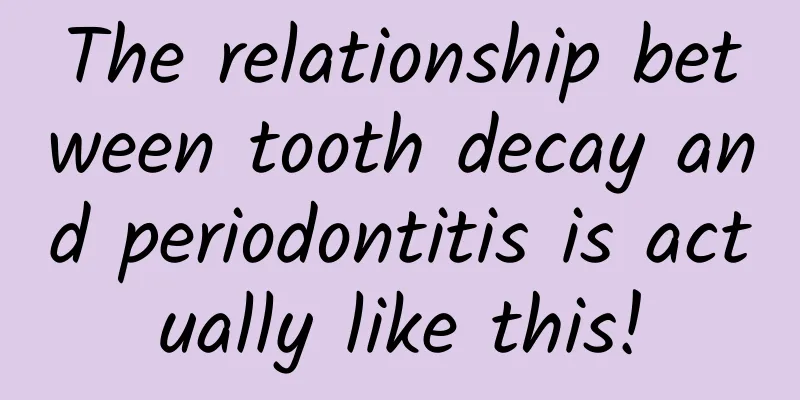The relationship between tooth decay and periodontitis is actually like this!

|
When it comes to tooth decay and periodontitis, many people are familiar with them. After all, these two diseases are indeed two common diseases in the dental department. As two diseases, tooth decay and periodontitis are definitely different, but in fact they also have some "similarities" and even connections. Today we will take a good inventory of what the differences are between tooth decay and periodontitis, and what are the "similarities" and connections. The difference between tooth decay and periodontitis First of all, the site of disease . Tooth decay attacks the teeth themselves, namely the enamel, dentin, cementum and even the pulp (after causing pulp disease, it is no longer called tooth decay, but is called chronic pulpitis, acute pulpitis, etc. depending on the actual situation); periodontitis attacks the supporting tissues around the teeth, such as the gums, alveolar bone, periodontal membrane, etc. The second is the symptoms . The main symptom of tooth decay is the formation of cavities in the teeth. Early tooth decay does not form cavities and generally does not attract attention, so when people discover it, there are usually cavities; the symptoms of periodontitis are mainly bleeding gums, alveolar bone absorption, etc. Similarities between tooth decay and periodontitis Although tooth decay and periodontitis have obvious differences in the location of disease and symptoms, they also have "similarities". First of all, the nature of the disease is that both are infectious diseases. The main difference is that the pathogens (pathogenic microorganisms) of the former are cariogenic bacteria, such as Streptococcus mutans, while the latter are periodontal pathogens, such as Fusobacterium nucleatum. The second is the outcome . The outcome of tooth decay and periodontitis is likely to be the loss of teeth, which can be said to be the same. The reason for tooth loss due to tooth decay is that the teeth themselves are hopeless and cannot be saved; the reason for tooth loss due to periodontitis is that the teeth are "displaced" and therefore cannot be saved. Then there are complications . Tooth decay can easily cause pulpitis, and periodontitis is actually the same. When pulpitis and periodontitis exist at the same time, it becomes a "combined periodontal and pulp disease". At this time, both the periodontal problem and the pulp problem must be solved. The link between tooth decay and periodontitis Tooth decay and periodontal disease are not only different, but also "similar" and related. The main manifestation is that tooth decay and periodontitis are often "contradictory", that is, people who are prone to tooth decay rarely have periodontitis, while people with periodontitis are generally not prone to tooth decay. This may be because there is an antagonistic relationship between caries-causing bacteria and periodontal pathogens. The former causes the oral environment to be acidic, while the latter causes the oral environment to be alkaline. |
>>: What should parents be wary of when facing respiratory infections in children?
Recommend
How to treat early stage uterine tumor?
Uterine tumor is a disease with a very high incid...
What is the cause of bleeding when pregnant women poop?
Pregnant women will encounter various problems du...
How do uterine polyps develop?
Uterine polyps are a gynecological disease that c...
What is the reason for being born with flat chest?
What are the reasons for being born with flat che...
What foods are good for women to eat during menstruation?
During menstruation, women's bodies are in a ...
The reason why women often have nightmares
Have you ever woken up from a nightmare? In our d...
Why are more and more elderly people infected with AIDS? The reason behind this is ignored by many people...
With the development and progress of the times, T...
What causes uterine adhesions?
Any factors that cause damage to the uterine wall...
Brown discharge one week after menstruation
When women reach those "few days", thei...
Rhinitis is more common in spring? How can we save ourselves?
As soon as spring arrives, all kinds of rhinitis ...
Frequent fetal movements near due date
We all know that when mothers are approaching the...
Why do women sweat at night? What should they do?
Female friends also have many health risks. They ...
What causes swollen labia?
If your labia are swollen, you should find out th...
8 Disadvantages of Women Staying Up Late Often
Due to various reasons such as family and work, i...
Is it okay to have sex half a month after a miscarriage?
The pace of social development is fast and the pr...









